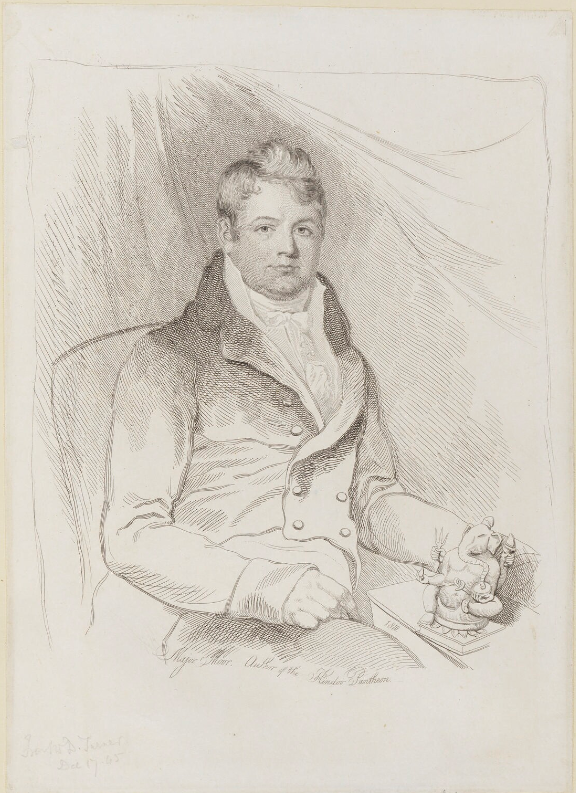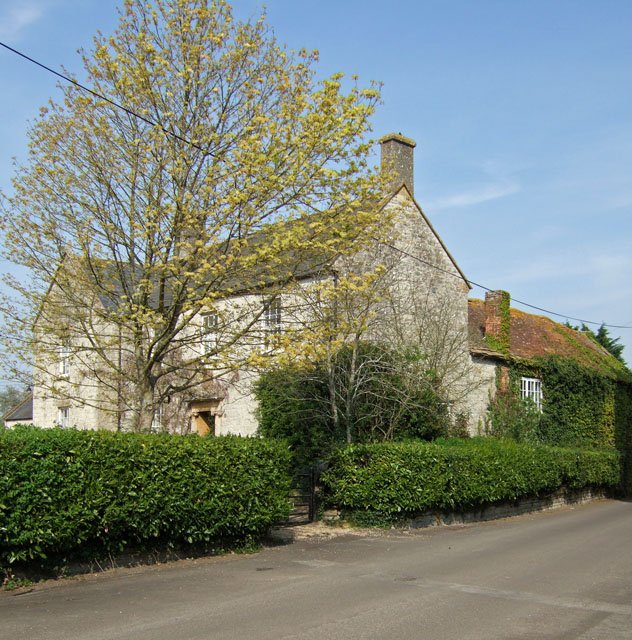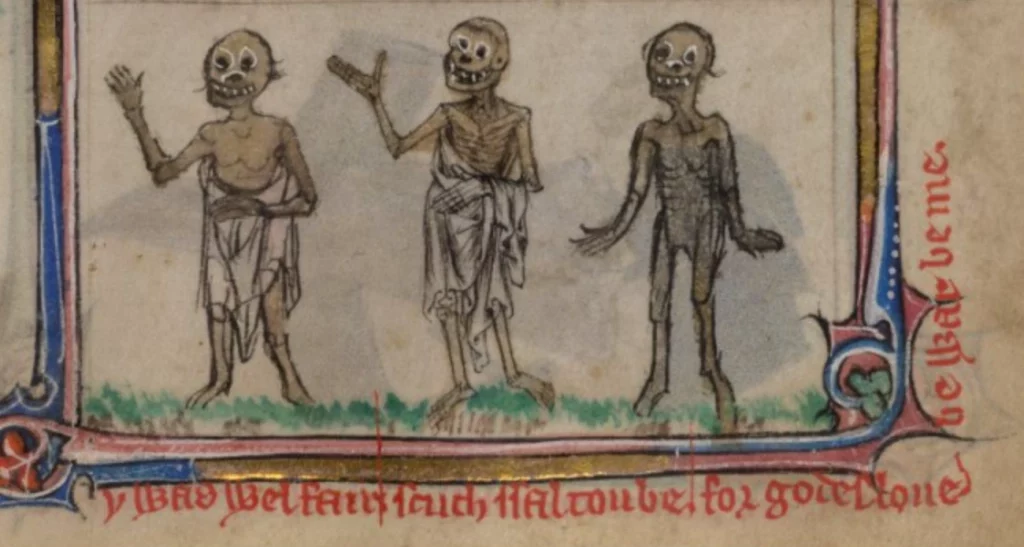Anyone who spends more than five minutes on this blog will see that I’m really interested in ghosts. Not so much the proving of them or anything like that; I’m not interested in trying to persuade anyone of their existence or otherwise. But ghost stories are one of the constants of humanity. When we think of ghosts, it typically involves a spectre in period costume. Ghosts after all, are traditionally a figure from the past and come with all the trappings of their time. But ghost sightings have been around for as long as we’ve had stories. In the modern day, we might hear of a figure in Victorian dress but that figure might have heard of the same but in Stuart dress and they in Medieval and back and back.
Ghost stories have been around for a long time is my point. And not just the typical tales involving people from the past but all manner of supposedly supernatural phenomena. Throughout history we have tales of the unexplained and people could be just as curious then as they can be now. Incidents might be investigated, conclusions recorded, and while historically societies have been more open to accepting the supernatural, they were also aware that such things could be delusions or insanity.
Here be three examples of hauntings recorded contemporaneously from various points in history, showing how the fascination has endured. They illustrate not only the interest in such events but also the interest in explaining them. They show people gathering so that they too could experience it for themselves and attempt to explain it away. As they show, people have always been keen to give their opinions and for as many people ready to accept a supernatural explanation there were just as many ready to dismiss it as hysteria.
Bealings Bells (1834)
In 1806, Major Edward Moor retired from the East India Company and went to live in Bealings House in the village of Great Bealings, Suffolk not to be confused by the nearby village Little Bealings. Moor was a fellow of the Royal Society and he published works on Hinduism which he had learned about during his time served in India. He and his wife lived a quiet life for almost thirty years before they were disturbed by something.
On 2nd September 1834, Moor returned from church to an agitated household. The house itself had existed in some form or other since the days of William the Conqueror and having been updated with the times had a row of service bells in the servants’ quarters. If you’ve seen Downton Abbey, or any other kind of period piece, you’ll be able to picture them quite easily. Each bell was attached to a ring pull in a different room; person pulled the rope and the bell rang alerting the servants to the needs of their employers. FYI, there were nine bells in Bealings House with a separate fixture for the three bedroom bells beside them with another on the opposite wall for the attic. On this day, in Moor’s absence, the dining room bell had rang on three separate occasions but each time the servants found the dining room empty.
The following day, something similar happened involving the same room and the same bell. This time, Moor was home for the last ring of the day and saw for himself that nobody was ringing it. The day after that things ramped up a little. Moor left early in the morning and returned in the evening to discover that all of the bells had been ringing almost constantly with a violent force that couldn’t be attributed to the ring pull. Moor and his son, Edward James Moor (a priest born in 1800) went into the kitchen to speak with the cook (the bells were in the kitchen) and while she told them what had happened that day, the bells started ringing again so forcefully they almost fell from their hangings. At this point, a terrified cook begged permission to leave for the day. She did and Moor assumed it was fear of the bells that had done it, but it later turned out that the cook had an ill relative that she wanted to check on, fearing that the bells might be some kind of portent of their death. As it happened, she found her relative in good health and recovering.
The bells would continue to ring multiple times a day, every day, for almost two months and Moor investigated the house thoroughly. He couldn’t find anything that could account for the ringing. The rooms were invariably empty when they were searched, a servant wouldn’t have been able to play such a prolongued practical joke in the house without somebody noticing and at any rate, the ringing of the bells caused the servants to leave the house several times leaving nobody inside anyway. When ringing the bells, Moor found that he couldn’t recreate the kind of force that almost brought them to the ground.
As events continued, more people bore witness to the seemingly haunted bells. Moor’s friends, family and neighbours had seen the bells ringing as had passing tradesmen but there seemed to be no pattern to the ringing. The ringing was apparently random; from the number of bells ringing at one time to the frequency with which they rang. While Moor and his son shared an evening meal, the bell for that room and those of the other ‘living rooms’ rang every fifteen minutes for an hour. Other times there was no pattern at all.

Having exhausted his own investigation, which included consulting with the tradesman who had hung the bells almost thirty years earlier and repaired them in the meantime, Moore wrote to his local newspaper the Ipswich Journal. They published his letter which included a fairly detailed account of the ringing based on the notes Moor had kept since the events began. His letter garnered many responses; some who thought it was a hoax and some who recounted their own experience with phantom bell ringing in other similar houses.
Moor hadn’t drawn any conclusions by the time the bells stopped. Nor did he come to any in the years following, though he corresponded with everyone who had written to him and the paper to share their own experiences. In 1841, still without any answers, Moor used his original letter, his records, and his correspondance as the basis of a book; Bealings Bells: An Account of the Mysterious Ringing of Bells at Great Bealings, Suffolk, And in other parts of England: With relations of farther unaccountable occurances in various places. This snappily titled book incidentally was produced and sold locally to raise funds for the maintenance of the local church’s bells.
Theophilus Brome (1670)
Continuing the trend of quintissentially and bizzarely named villages in England, we travel to Chilton Cantelo in the county of Somerset. Somerset saw a lot of fighting during the English Civil War where the Parliamentarian forces of Oliver Cromwell pitted themselves against the Royalist army that supported the monarchy. The county was largely Parliamentarian but allegedly one Theophilus Brome of Chilton Cantelo fought on the side of the Royalists.
Or at least he started on the side of the Royalists. Supposedly he was so disgusted by the way in which the Royalists treated their prisoners that he switched sides and joined Cromwell. There’s certainly some evidence for this. The treatment of prisoners during the Civil War was largely governed by the unwritten code of chivalry but sometimes a gentleman’s agreement wasn’t quite enough to deal with the aftermath of a bloody battle.
Prince Rupert of the Rhine, a nephew of Charles I, was especially known for his violence even in victory though some of this is inevitably attributed to Parliamentarian propaganda. He really did do some shitty things though, leading even his comrades to condemn him and denounce his actions as those of foreigner. Like the time he scouted the surrounding villages after the Battle of Edgehill (1642) and killed what enemy soldiers he found there, even the wounded and surrendering. Elsewhere, a regiment of the Queen’s army drove some Parlimentarian troops into a church (Burton-in-Trent 1643) and refused their surrender before forcing their way into the church and killing the cowering occupants. That isn’t to say that there aren’t similar stories about Parliament’s forces but there was certainly plenty for Brome to be disgusted by.
Off to the Roundheads went Brome and Cromwell’s forces eventually claimed victory (the victory and Brome’s defection are likely unrelated). Brome returned home to Higher Chilton Farm where he lived with his sister. For a little over a decade, the monarchy in Britain was replaced by a Protectorate until the royal family was restored in 1660 with the return of Charles II.
As king, one of his first acts was retribution against the engineers of his father’s execution. Three of them, including Oliver Cromwell, were already dead but this didn’t stop Charles. They were exumed, posthumously beheaded, and their heads displayed on pikes. Brome feared that the same thing might happen to him when he eventually died, developing such a fear that he had his sister swear that upon his death she would take his head for himself and keep it at their farmhouse. His fear was likely misplaced given that he was a minor defector rather than one of the architects of the Interregnum. Regardless, when Brome died in August 1670 his sister followed his wishes and kept his skull.

Apparently, when Brome’s sister died and the farm was taken over by its next tenants, they thought it was a little weird to have a fresh skull sitting in a cabinet near the front door. They tried to take Brome from the house at which point the house was filled with screams and groans which only ceased when the skull was returned to its cabinet. There are several undocumented stories over the years; in the 1800s a man tried to remove the skull and was struck by a roof tile which sometimes killed him and other times just really hurt, but on the whole the stories mostly point to the sound of screaming if the skull is taken from the house.
In 1760, a hundred years after Brome’s death, the historian Rev. John Collinson compiled The History and Antiquities of the County of Somerset. He included details of Brome’s grave and made reference to the epitaph which referred to how Brome had “dyed in peace”. He also recorded how the sexton of the church had attempted to bury Brome’s skull but in digging the necessary pit found his spade break into two shards. He gave up and returned the skull, swearing off another attempt. The screams are well documented as recently as 1970 though the current owners of the farm have insisted that as they haven’t tried to move the skull, Brome has proved himself a quiet and pleasant housemate. Brome’s grave has been investigated and the remains inside are indeed missing the skull.
The Mackie Poltergeist (1695)
One of the more well-documented hauntings is that of ‘Ringcroft of Stocking’ farm in Scotland. The priests of five different surrounding parishes recorded the events and a report was prepared with witness statements that included the testimony of two lairds. People who had visited and lived at the farmhouse over the years had occasionally reported strange occurances, but it was February 1695 when things seemed to really kick off.
At the time, the farm’s tenant was stonemason Andrew Mackie and his family. Mackie was going about his evening rounds on the farm when he found that all his cows weren’t where they should be. They’d been let out of their cowshed (or byre) and those that had been tied up had had their ropes cut. The following day, the same thing happened, as it did the day after that. On one occasion, one of the cows had been somehow been tied up and suspended from a roof beam in the cowshed. Even after he used stronger ropes and moved the cattle to a different outbuilding, the same thing kept happening.
After about a week of this, the cows were left alone which was of great relief to Mackie but probably of greater relief to the cows. Instead, things started to happen within the Mackie home. It started when he discovered a pile of peat in the house. It had been lit and was burning but he managed to extinguish it before any damage was done. There was an even weirder moment the following day when his children found what looked like a person covered in a blanket, but when they removed the cover they found that it was only a stool arranged in such a way as to make it look like a person. Standard household hijinks.
Whatever was going on in the house only continued to escalate. Household items went missing and reappeared in places that had already been searched. Stones would be thrown at the family, guests would be slapped by unseen hands, and it was just a generally bad time to be anywhere near the house. Far more concerning were the repeated fires that kept breaking out inside the house and outbuildings. When the sheep started catching fire, the Mackies approached a local priest.
Reverend Alexander Telfair was the first minister to visit the farm and he did not have a good time. In his own account he said that the spirit “threw stones and divers other things at me, and beat me several times on the Shoulders and Sides with a great Staff, so that those who were present heard the noise of the Blows.“

Telfair didn’t stay long. Nor did the various people who accompanied him to act as witness to the events. His investigation hadn’t gotten anywhere except to confirm that he couldn’t explain any of the strange happenings and he hadn’t found any reason why it should be happening. He referred to the events as ‘the trouble’ and asked some fellow ministers from the area to help. The ‘trouble’ increased its violence; violently beating those who came to the farm and throwing flaming shards of peat at visitors. More people started to gather to see if the strange rumours they’d heard about the place were true only to find themselves slapped about by invisible hands for their efforts.
When Mackie’s wife discovered a pile of bones near the front door under a stone, a magistrate theorised that they belonged to a murder victim and were causing the trouble. He went to the Laird of Colline and asked him to round up all the previous occupants of Ringcroft. His theory was that if they were all brought together and compelled to touch the bones then the bones would start bleeding when the murderer touched them. The previous tenants were gathered but the bones didn’t start acting like a horror movie when they were touched by any of them. In the meantime, the violence only increased and the Mackie children found their bed set aflame while they were in it.
At this point, the Mackies decided they were done and left the house. Neighbours kept an eye on the place and after a week of nothing happening, the Mackies returned only for the nightmare to begin again. Locals joined in an almost constant prayerful exorcism which went on for weeks and injured many of those praying. Andrew Mackie lost his rag and confronted the trouble which apparently told him that his goal was to burn down the house. After a few more attempts at arson the trouble addressed Mackie and told him that he’d be left in peace from Tuesday after one last stone throwing and instructed him to remove all the straw from the farm. We don’t know if Mackie actually took the straw away but Tuesday came, stones were thrown, and once again the buildings were set on fire. But the farm wasn’t bothered again. The house had burned down though so the Mackies had to move on anyway.
The following year, Telfair wrote out a day by day account of the haunting with each event accompanied by the name of the witness/ess who would attest to it. A number of explanations were put forward from mass hysteria to troublesome neighbours to Mackie having promised his firstborn to the devil. The last argument at least has been rebuked; Telfair specifically interviewed Mackie to this end and found that he didn’t even know how to make such a pact. Not that he had ever been inclined to given that he was just another godfearing and pious member of the community.
As ever, you can join me behind the scenes at my Patreon for more historical hauntings and everything that didn’t make the cut.













